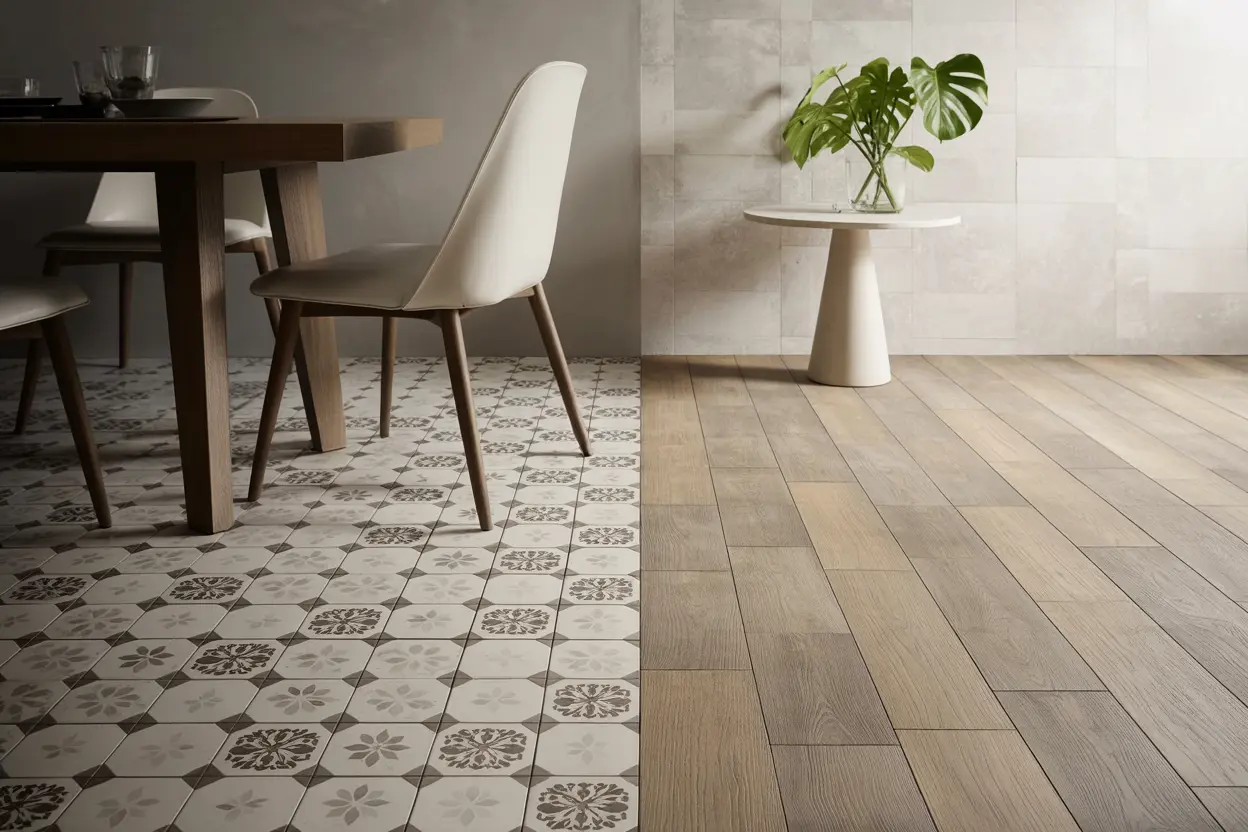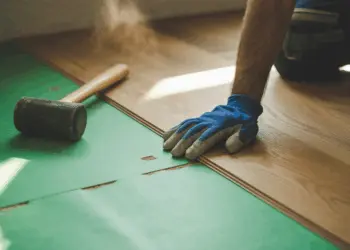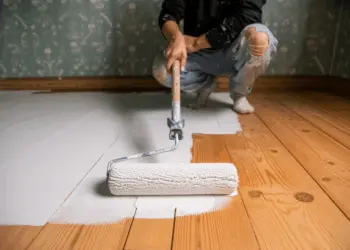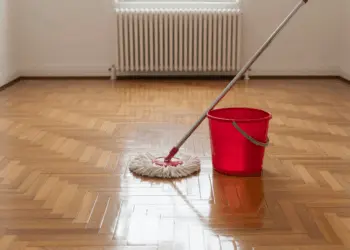Ever gone into a room and felt like something was just. amiss? Perhaps it was the abrupt change from tile to hardwood or the jarring bump between carpet and laminate. Transitions on the flooring, though frequently dismissed, are integral to the flow and atmosphere of the home. They maintain safety, add beauty, and afford an airy transition between varying flooring surfaces.
In this all-in-one guide, we’ll explore the art and science of flooring transitions. From learning why transitions matter to discovering the best materials and techniques for different combinations of flooring, we have you covered. If you’re remodeling, building from the ground up, or simply interested, this guide will give you the information you need to make the best choices.
Table of Contents
Why Flooring Transitions Matter
Before we jump into the how-to, let’s talk about why transitions are a big deal. A good transition isn’t just about aesthetics (though, let’s be honest, that’s a huge part!). It’s also about functionality-preventing trips, hiding uneven edges, and ensuring your floors last. Poor transitions? They’re like a bad haircut: noticeable for all the wrong reasons.
Safety First
Uneven flooring can be a hazard. Ever stubbed your toe on a clunky metal strip? Ouch! Proper transitions smooth out height differences, making your home safer for kids, pets, and clumsy adults (no judgment here!).
Aesthetic Flow
Your home should feel cohesive, not like a patchwork quilt. Transitions tie rooms together, creating a unified look. Whether you’re blending rustic hardwood with modern tile or cozy carpet with sleek vinyl, the right transition keeps things visually harmonious.
Durability Boost
Transitions protect flooring edges from wear and tear. Without them, your hardwood might chip, or your carpet could fray. A well-chosen transition strip acts like a shield, extending the life of your floors.

Types of Flooring Transitions
In our quest for the best solutions in How to Transition Between Flooring Types and What Is the Best Transitioning That Matches Each Floor Type Like What Matches Transitioning Tile Flooring to Hardwood Best and More, let’s explore the main types of transition strips. Each serves a purpose, and picking the right one depends on your flooring materials and style goals.
1. T-Molding
Shaped like a “T,” this classic strip is perfect for floors of similar heights, like hardwood to hardwood or laminate to laminate. It sits flush, creating a smooth bridge.
- Best for: Same-height transitions (e.g., hardwood to hardwood).
- Pro tip: Choose a T-molding that matches one of your flooring colors for a subtle look or go bold with a contrasting shade!
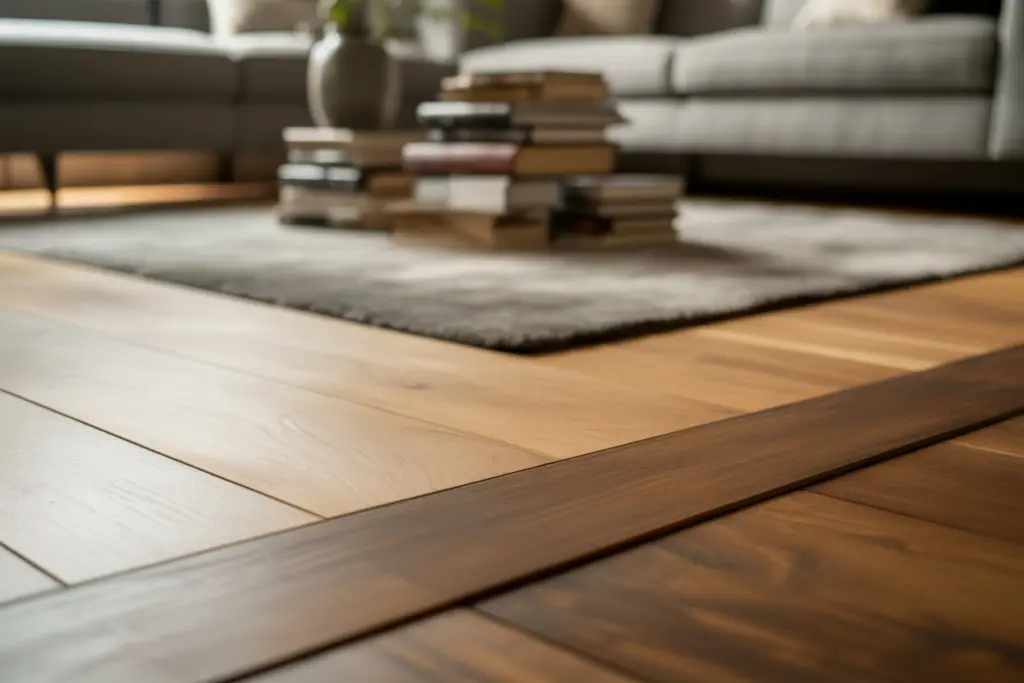
2. Reducer Strips
Got floors with different heights? Reducers are your go-to. They slope gently to bridge the gap, like a ramp between your thick tile and thinner vinyl.
- Best for: Height differences (e.g., tile to vinyl).
- Fun fact: Some reducers come in customizable finishes-perfect for quirky design lovers!
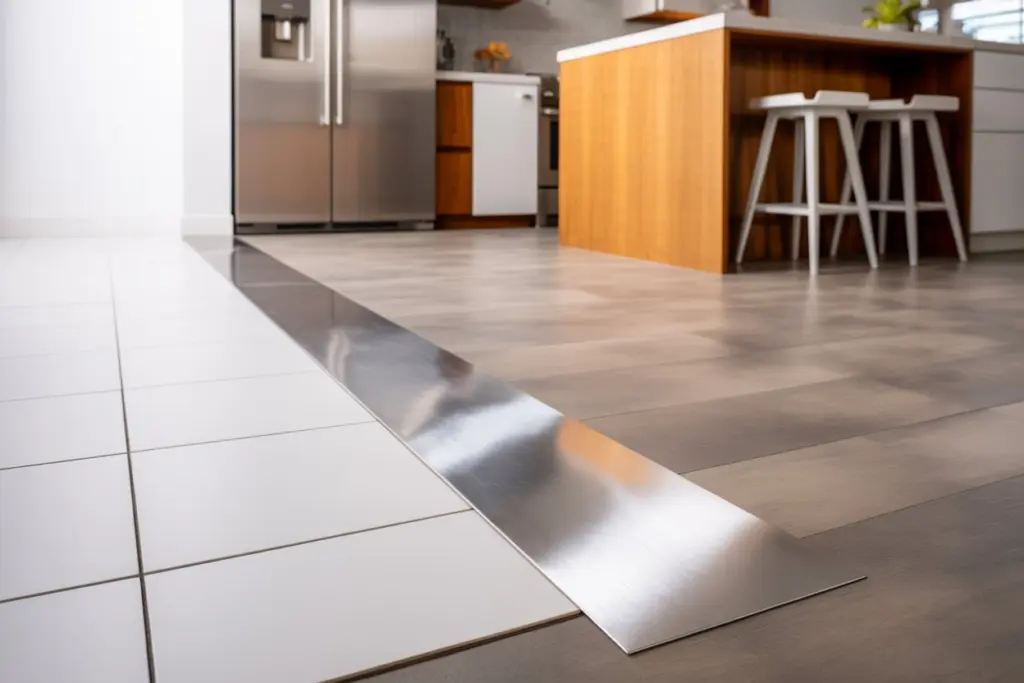
3. Thresholds
These are wider, often used at doorways or room entrances. Think of them as the grand entrance to your flooring transition.
- Best for: Room-to-room transitions (e.g., carpet to tile at a doorway).
- Style hack: Marble or stone thresholds add a touch of elegance.
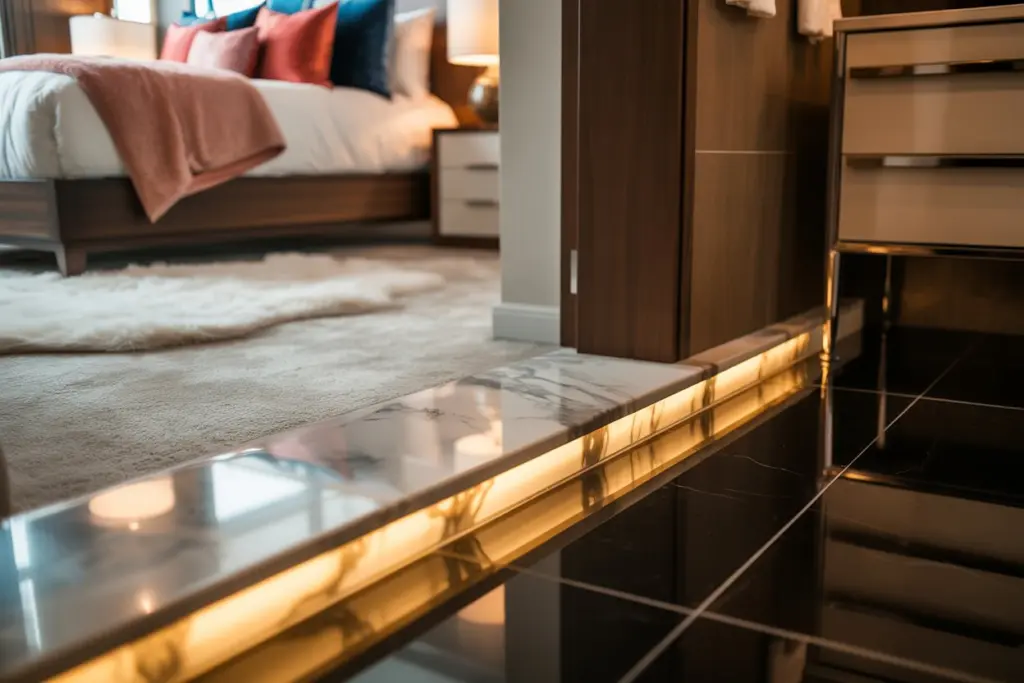
4. End Caps
Also called square-nose transitions, these are ideal for stopping one flooring type abruptly, like where carpet meets a fireplace hearth.
- Best for: Edges against non-flooring surfaces (e.g., carpet to a sliding door).
- Heads-up: Ensure a snug fit to avoid gaps.
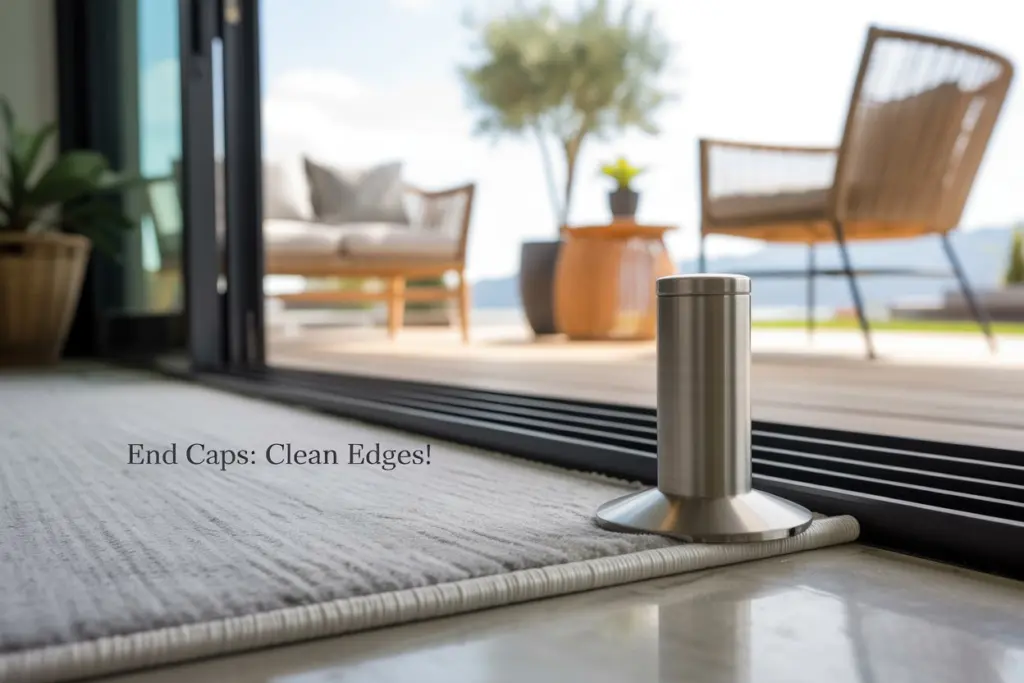
5. Flush Transitions
For a minimalist vibe, flush transitions use no strip at all-just precise cuts and adhesive to blend floors seamlessly.
- Best for: Tile to hardwood or tile to tile.
- Warning: Requires expert installation to avoid cracks.
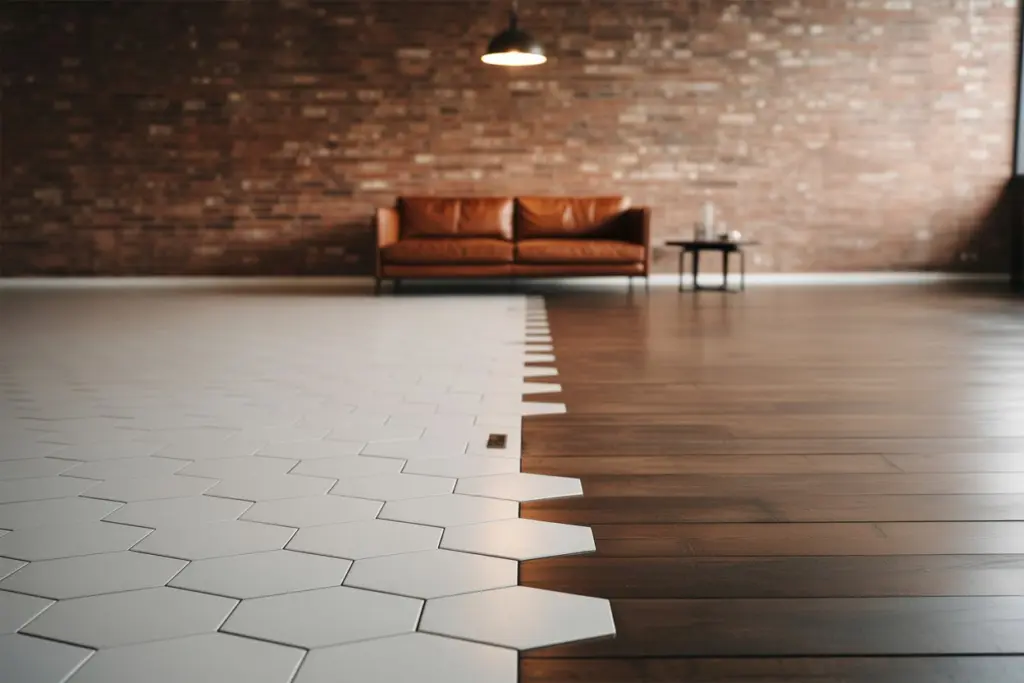
6. Border Transitions for Defined Spaces
Using a contrasting border material, such as a strip of tile between hardwood and carpet, can delineate spaces while adding a decorative element.
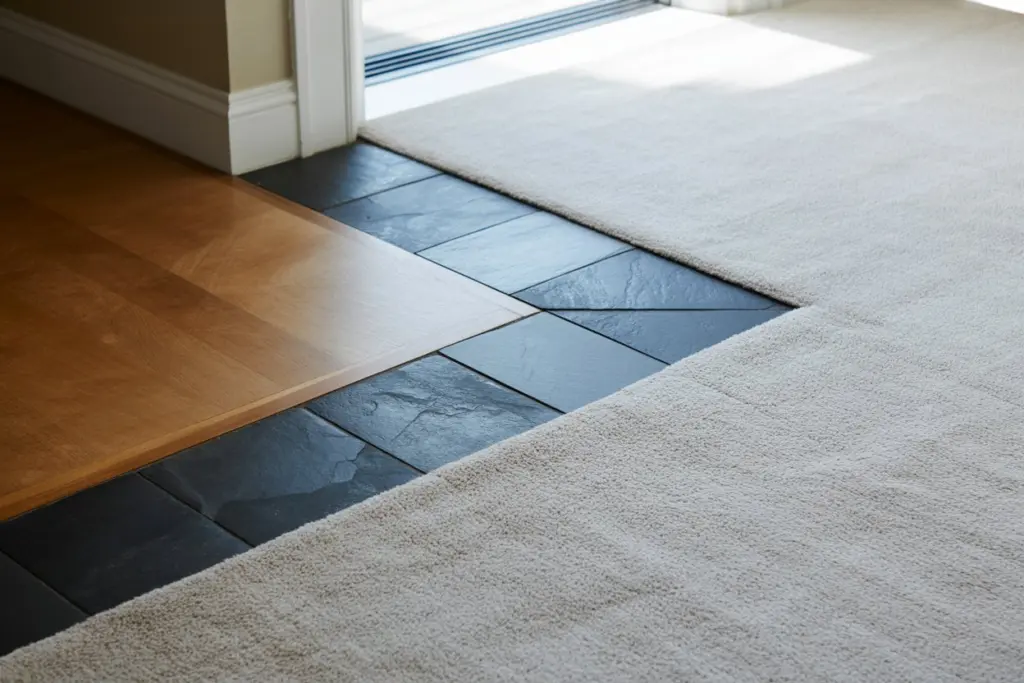
7. Patterned Transitions for Visual Interest
Incorporating patterns like herringbone or chevron at the transition point can create a striking visual effect, blending different flooring materials artistically.
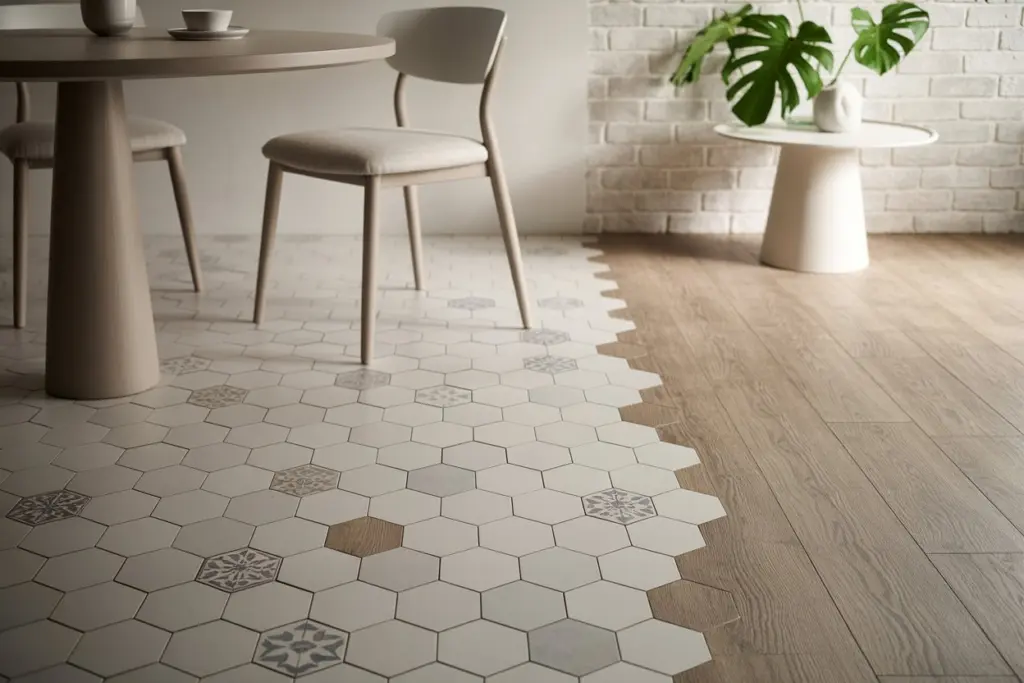
Best Transitions for Specific Flooring Combos
Now, let’s get to the heart of How to Transition Between Flooring Types and More. Different flooring combos call for different solutions. Here’s the lowdown on the best matches.
Tile to Hardwood
This combo is a fan favorite-think glossy kitchen tile flowing into warm living room hardwood. The key? A T-molding or flush transition.
- T-Molding: If the tile and hardwood are similar in height, a wooden T-molding stained to match the hardwood creates a cohesive look. Oak or walnut finishes? Yes, please!
- Flush Transition: For a sleek, modern vibe, cut the tile and hardwood to interlock tightly with no strip. A pro installer is a must here-don’t try this at home unless you’re a flooring ninja!
- Why it works: Both materials are durable, so the transition needs to be equally tough and stylish.
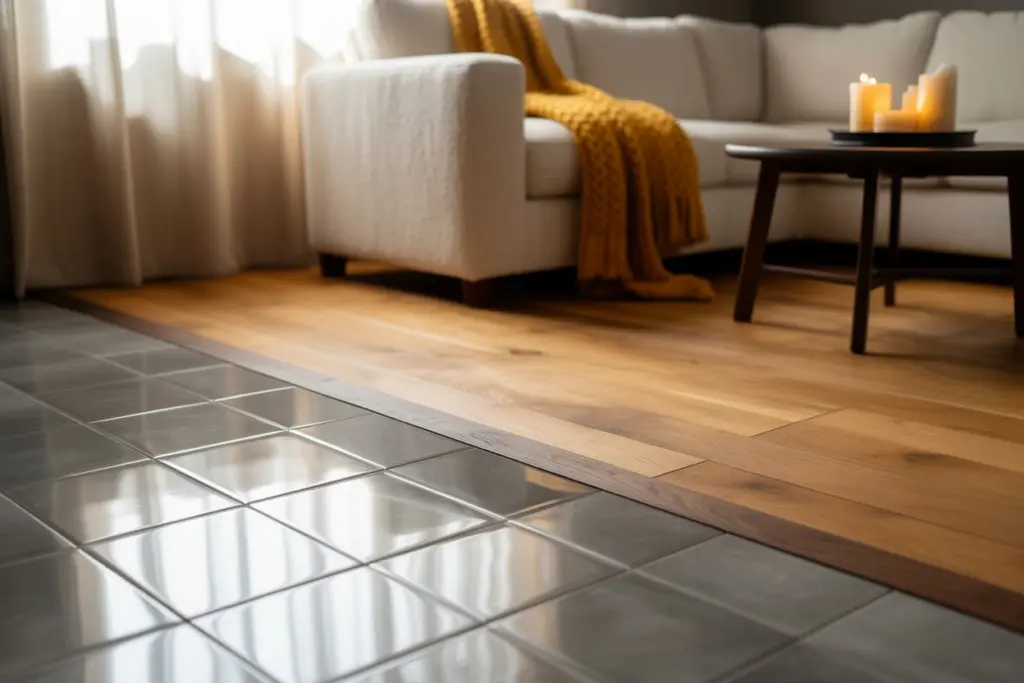
Hardwood to Tile
- Considerations: Address height differences and expansion gaps.
- Solutions: Use T-molding or a flush transition with appropriate underlayment to align heights.
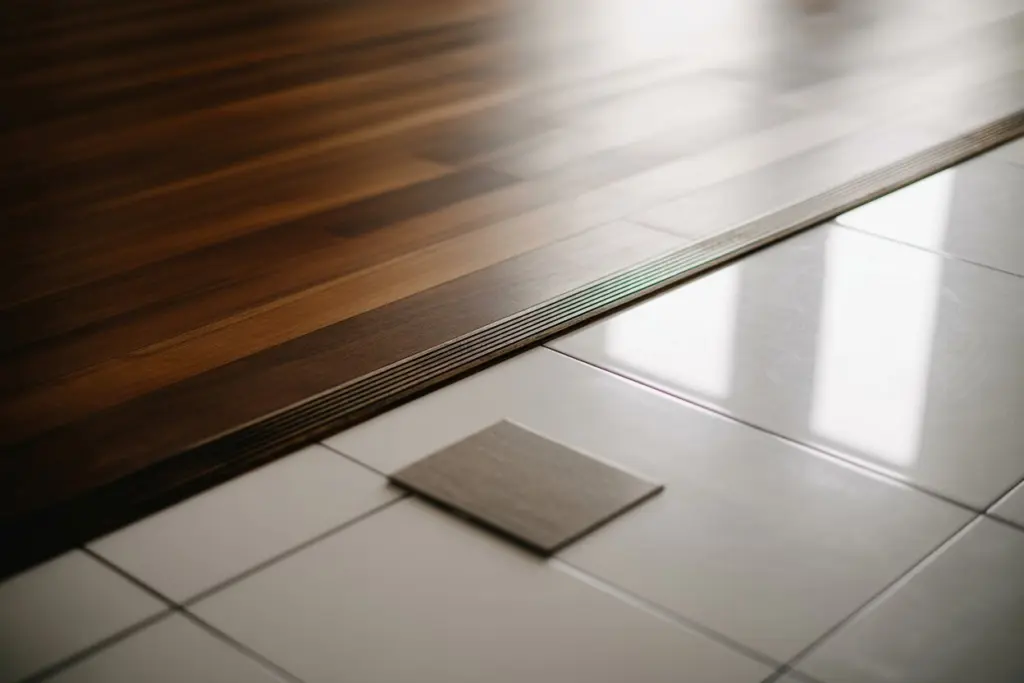
Carpet to Tile
Carpet to tile screams cozy-to-cool, like a bedroom-to-bathroom shift. A threshold or reducer strip shines here.
- Threshold: A metal or stone threshold at a doorway keeps the carpet tucked in and the tile protected. Brushed nickel or marble thresholds add a luxe touch.
- Reducer Strip: If the tile is higher, a reducer smooths the slope. Go for a neutral color to avoid clashing with your carpet’s pattern.
- Pro tip: Use a carpet tack strip to secure the carpet edge before adding the transition.
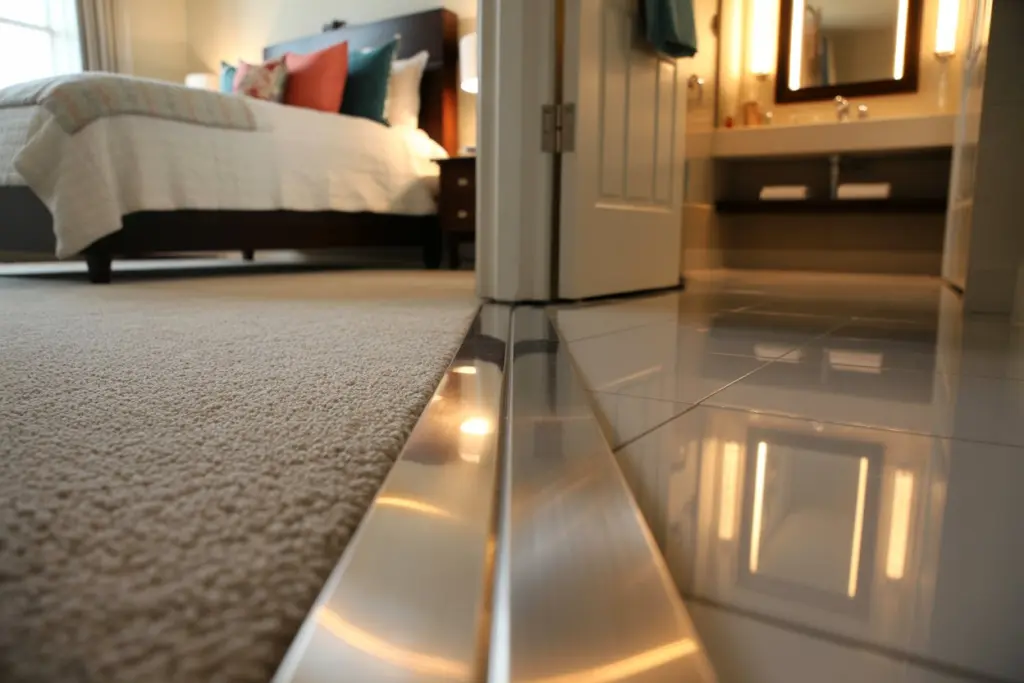
Hardwood to Vinyl
Vinyl’s affordability meets hardwood’s timeless charm in this pairing. A reducer or T-molding works wonders.
- Reducer Strip: Vinyl is often thinner than hardwood, so a reducer bridges the gap. Vinyl-look reducers mimic wood grain for a seamless blend.
- T-Molding: For same-height floors, pick a T-molding that matches the hardwood’s tone to keep things classy.
- Style note: Vinyl’s versatility means you can get creative with colors-don’t be afraid to experiment!
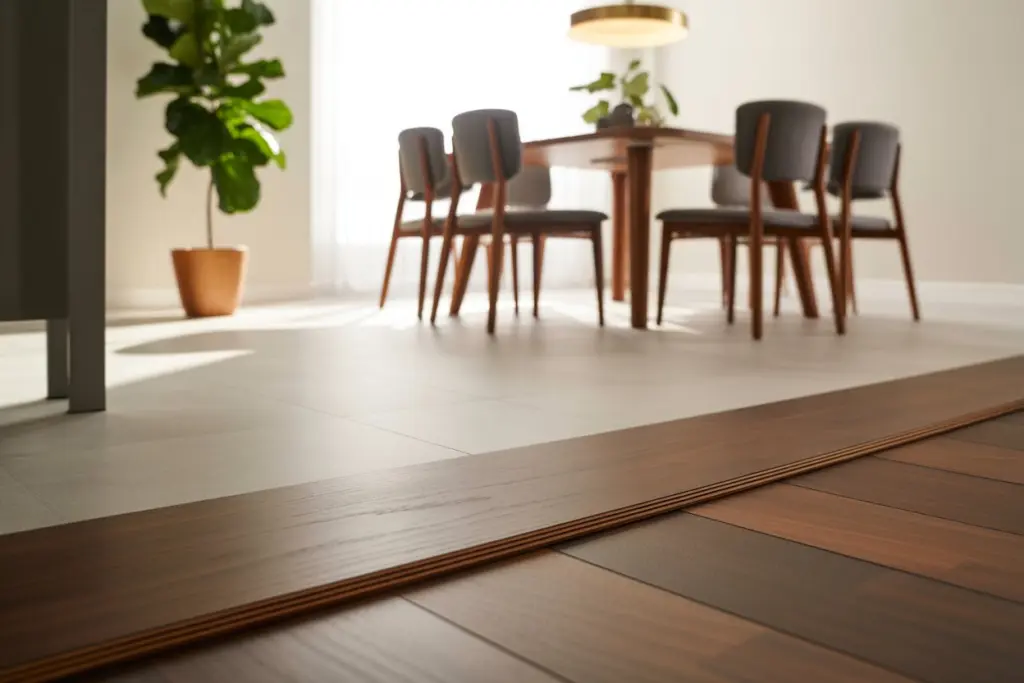
Laminate to Carpet
Laminate’s sleek surface contrasts with carpet’s softness, often in open-plan spaces. End caps or thresholds are your friends.
- End Cap: This tucks the carpet edge neatly under the laminate, preventing fraying. Metal or wood-look end caps add durability.
- Threshold: A wider threshold works for high-traffic areas, like a hallway to a living room.
- Installation tip: Ensure the carpet is stretched tightly to avoid lumps under the transition.
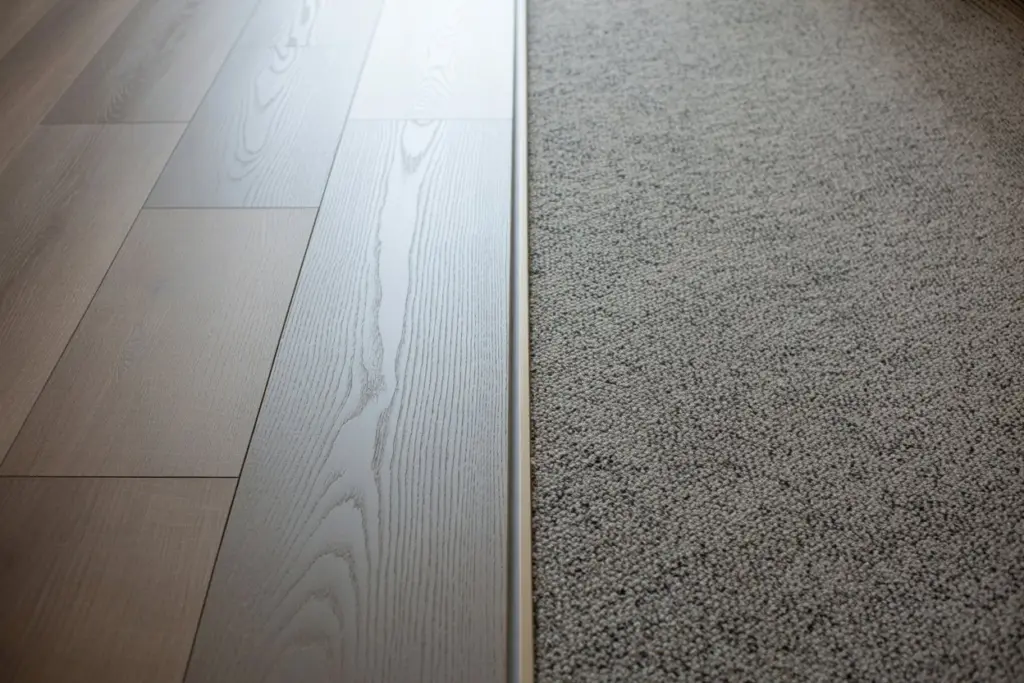
Tile to Concrete
Industrial chic, anyone? Tile to concrete is common in basements or lofts. Flush transitions or reducers are ideal.
- Flush Transition: Polished concrete and tile can blend seamlessly with precise cuts and grout matching the tile’s color. It’s like they were meant to be!
- Reducer Strip: If the concrete is lower, a reducer smooths the drop. Go for a metallic finish for that urban edge.
- Heads-up: Concrete can be cold-consider underfloor heating for comfort!
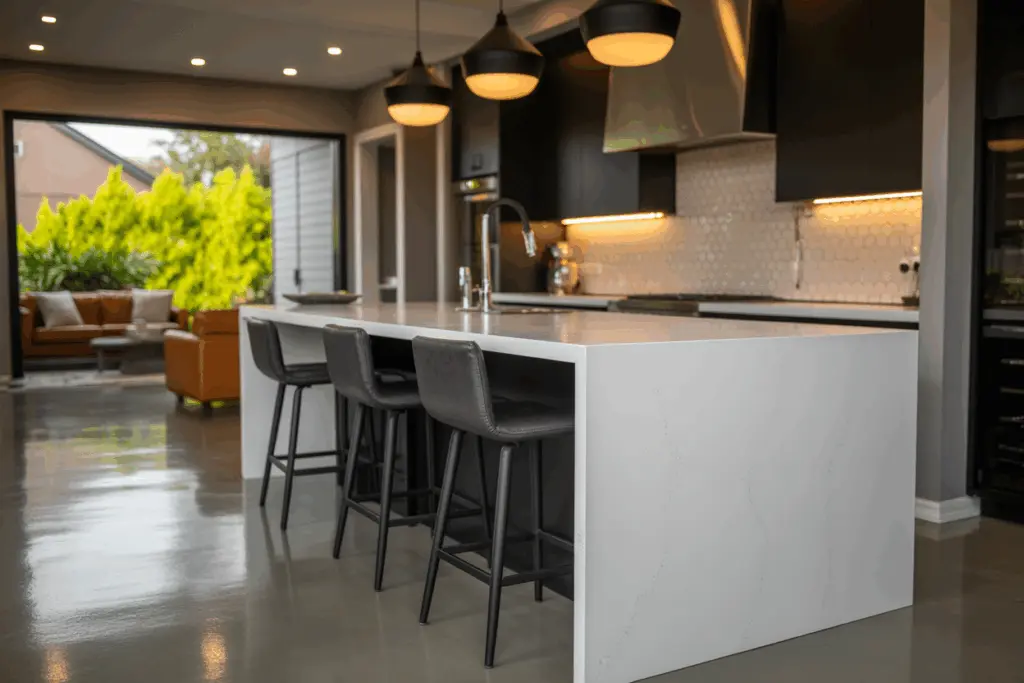
Laminate to Vinyl
- Considerations: Account for differing expansion rates.
- Solutions: Use a transition strip that allows for movement, such as a T-molding designed for laminate and vinyl interfaces.
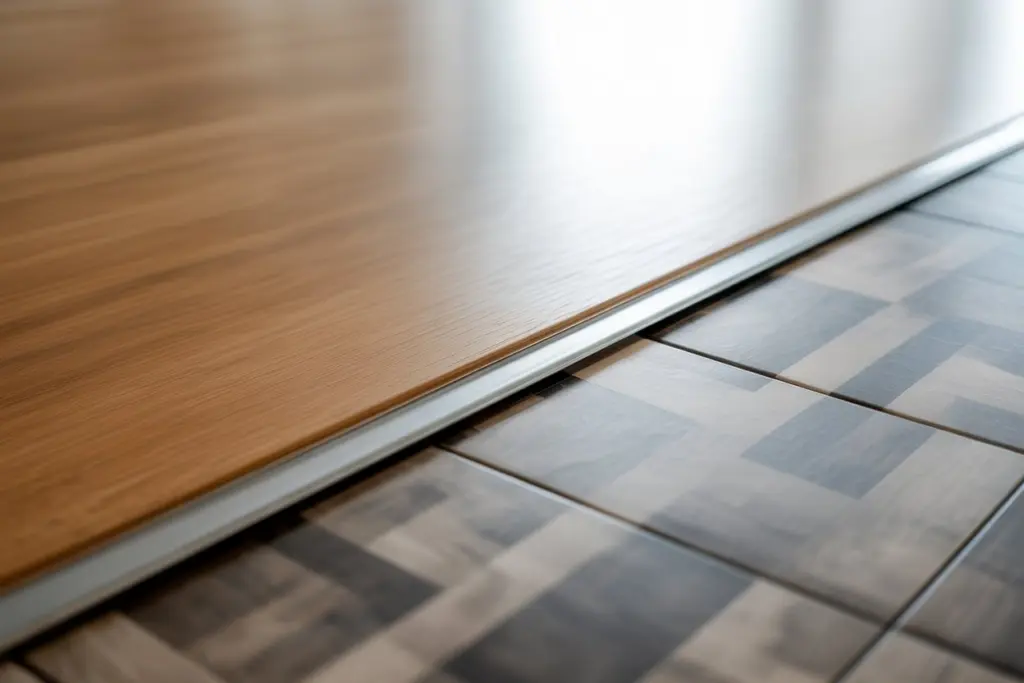
Installation Tips for Flawless Transitions
Installing transitions isn’t rocket science, but it’s not a walk in the park either. Here’s how to nail it (pun intended!).
Measure Twice, Cut Once
Sounds cliché, but it’s true! Measure the gap between floors carefully to ensure your transition strip fits like a glove. A wonky cut? That’s a recipe for disaster.
Choose the Right Adhesive
Some strips snap into place, while others need glue or nails. Check the manufacturer’s instructions-using the wrong adhesive can lead to loose strips and a whole lotta frustration.
Mind the Gap
Leave a small expansion gap (about 1/8 inch) for hardwood or laminate to breathe. No gap? Your floors might buckle when the weather changes.
Hire a Pro (If Needed)
Flush transitions or complex cuts require serious skill. Don’t be a hero-call a professional if you’re unsure. Your floors will thank you.
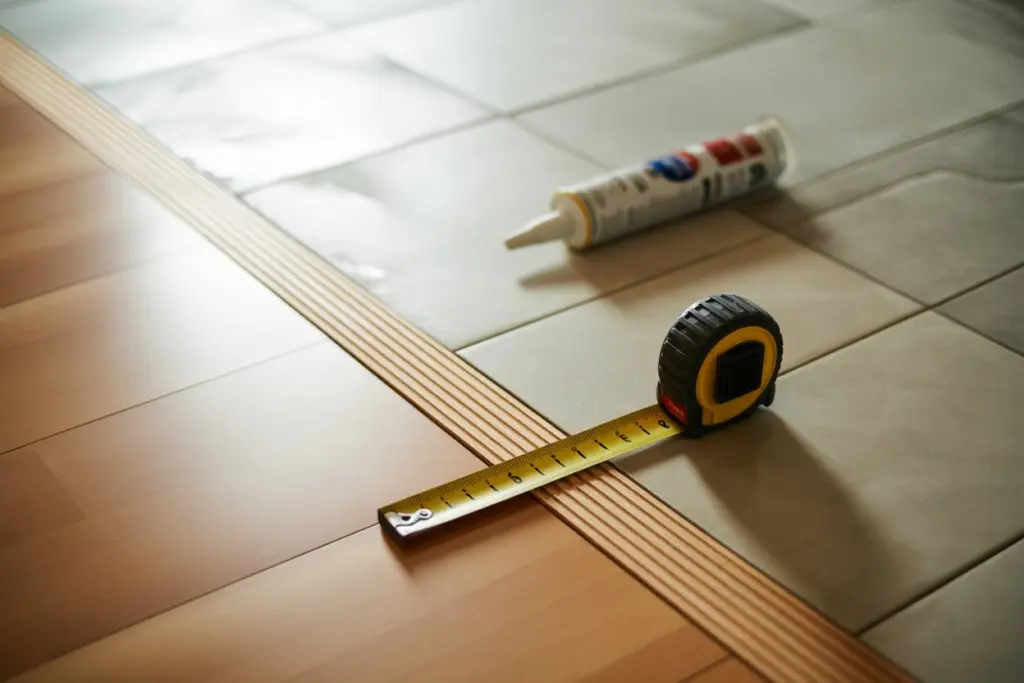
FAQs
Can I install flooring transitions myself?
AIf you’re handy with a saw and measuring tape, go for it! But for flush transitions or tricky angles, a pro might save you a headache.
How do I clean transition strips?
A damp cloth and mild cleaner do the trick. Avoid harsh chemicals-they can dull metal or wood finishes.
What’s the most budget-friendly flooring transition option?
Reducer strips or T-molding in vinyl or aluminum are wallet-friendly and durable. Shop around for deals-your bank account will thank you!
Can I mix different flooring transition types in one home?
Totally! Mixing T-molding in one area and thresholds in another adds variety, as long as the colors and styles vibe together.
And there you have it, folks-the ultimate guide to How to Transition Between Flooring Types and What Is the Best Transitioning That Matches Each Floor Type Like What Matches Transitioning Tile Flooring to Hardwood Best and More! From T-molding to flush transitions, we’ve covered the best ways to bridge tile to hardwood, carpet to laminate, and beyond. With the right tools, a bit of patience, and maybe a professional’s touch, your floors can flow seamlessly, tying your home’s look together like a perfectly wrapped gift. So, grab those transition strips, channel your inner DIY guru, and make your floors the talk of the town (or at least your living room!). Got a flooring project in mind? Dive in and make it happen-you’ve got this!
